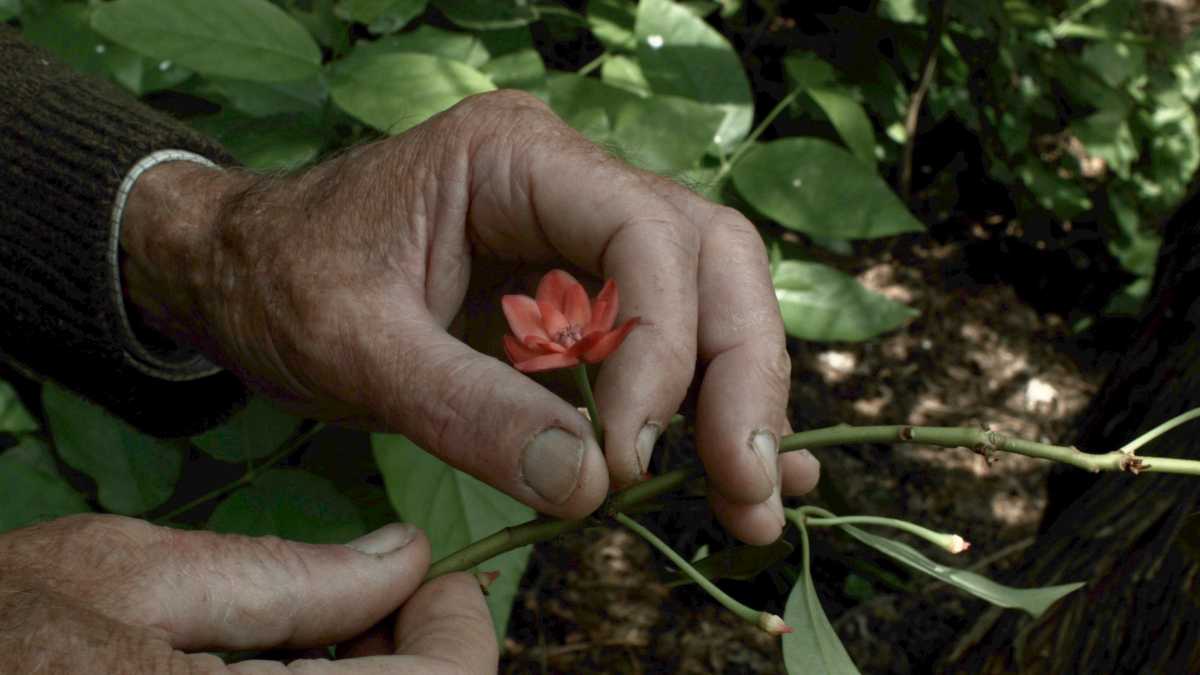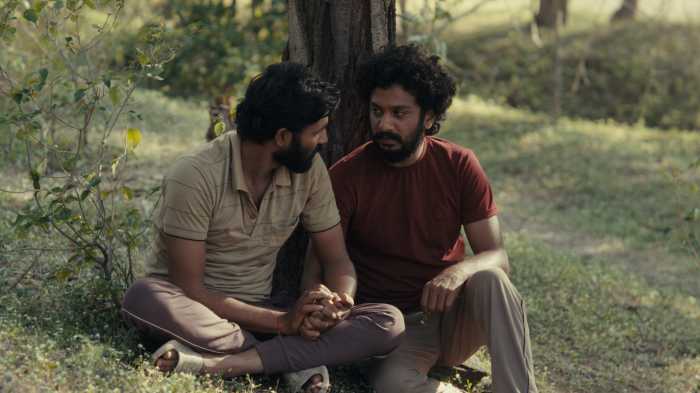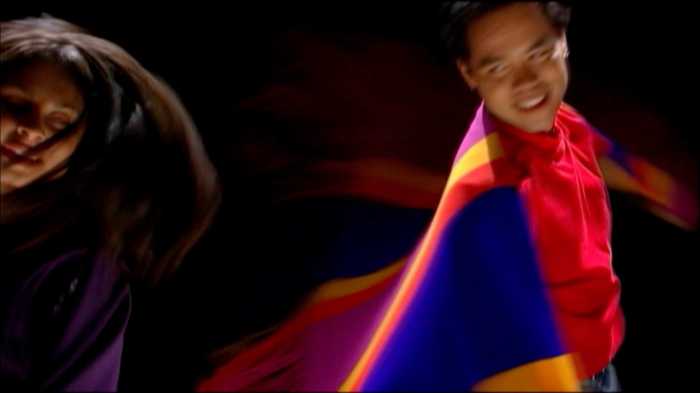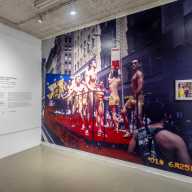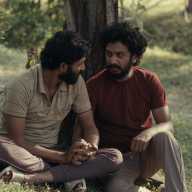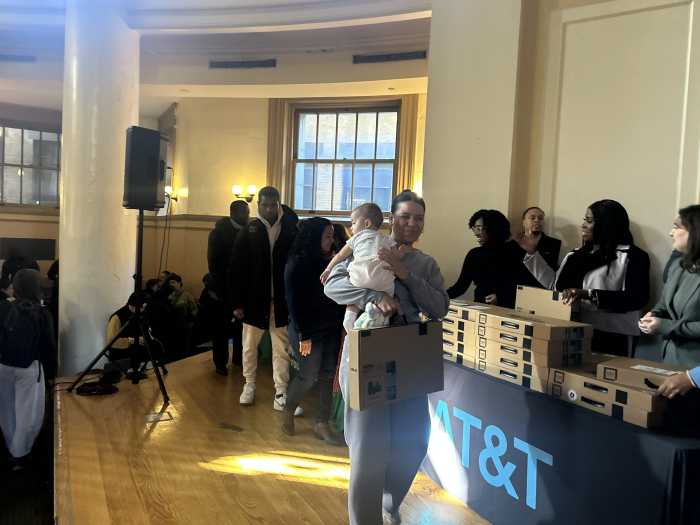In the best sense of the word, Pierre Creton is a hobbyist. While he’s been able to accumulate a sizable body of work — most of which can be seen in BAM’s current retrospective — the gay French director works far outside the careerist rat race. He’s never tried to make a living as a filmmaker, instead working as a farmer in Normandy. He centers the lives of the residents of rural France from the perspective of someone who actually lives there. His films pursue other uncommercial interests, like the lives of elderly queer men.
His latest documentary, “7 Walks with Mark Brown,” co-directed by his partner, Vincent Barré, demonstrates the freedom he’s found. With a two-part structure, it’s deceptively simple. (This film’s precursors can be seen in BAM’s “Voyager (travelling)” shorts program.) Shot in June 2023, the film documents a week-long trip around the coast of Normandy with botanist Mark Brown and a small crew. For the benefit of the camera, he identified dozens of plants located along the way. On the seventh day, they headed into a forest built up to recreate plant life from the dinosaurs’ era.
Without explicit mysticism, “7 Walks With Mark Brown” is a hymn to the value of preserving our planet and the importance of life outside the human race. Brown takes care to point out edible and medicinal plants. He spots an herb that used to be given to people suffering from scurvy, as well as willow trees, from which aspirin was derived. Yet along the way, one can’t help noticing how many of these plants are now endangered.
The first section of “7 Walks With Mark Brown” documents its own production and showcases how it came to exist. Breton, Barré, and their crew can be seen and heard, wielding microphones and cameras. On the soundtrack, insects buzz away. Everyone wishes they could continue their “seven days of happiness.”
In its second half, called “Herbarium,” the film departs for a parallel road. Creton and Barré edit the footage we’ve seen being shot, dropping out live sound and adding a voice-over with Brown. This is where “7 Walks With Mark Brown” ascends into visionary greatness. In a relaxed whisper, Brown recites the common and Latin names of each plant he encounters. The camera zooms in on them for loving close-ups. Tiny beetles crawl over a flower, while other plants sway gently in the water. The cinematography brings out startlingly bright colors. With nothing to focus on besides these images and Brown’s voice, the film becomes deeply hypnotic. It creates the effect of moving backwards in time, towards a period when plants dominated Earth. When we get a forest of ancient ferns, where camphor’s pungent odor evolved to repulse long-extinct herbivorous reptiles, “7 Walks With Mark Brown” becomes more transporting than all but the best science fiction. Connecting to nature in a Brooklyn theater is easier than anyone would guess.
The rest of the retrospective is well worth exploring. Creton tends to mix documentary and fiction, returning to similar themes: queer men living outside big cities, life amidst nature. Last year, his convoluted fantasy “A Prince” was released in the US. Out of the ones I’ve sampled, Creton’s 2017 “Go, Toto!” ranks with “7 Walks With Mark Brown” as his best.
While its embrace of a hybrid narrative incorporating non-fiction and contrapuntal use of sound and image are standbys of French art cinema, the film puts it all together with a rare intimacy. It relates several stories regarding humans living alongside animals. Madeleine adopts Toto, a young wild boar, who lives on a farm alongside her dog and chickens. In her village, this is illegal, and as Toto grows larger, the town threatens to send a hunter to kill him. As Barré travels in India, a monkey enters his room, climbing through the window and rummaging through it while he sleeps.
“Go, Toto!” avoids anthropomorphism and sentimentality, while rethinking conventional wisdom about humans’ relationship to animals (especially “wild” ones.) Creton’s direction relies on split screens, sometimes giving two angles upon the same landscape. Similarly, he disconnects people’s images from their voices: Even though he filmed himself and his circle of friends, professional actors read their words offscreen. The film has a slight mystical edge, as if it had a direct line to its characters’ thoughts. This becomes clearer when it imagines the dreams of Joseph, who sleeps with a machine to treat sleep apnea. Gradually, “Go, Toto!” slips further into fantasy, yet its grounding in the material reality of Creton’s village never vanishes. Like all of his films, it’s a highly original work.
“7 Walks With Mark Brown” | Directed by Pierre Creton and Vincent Barré | In French with English subtitles
Several Futures | Opens at BAM June 20th

